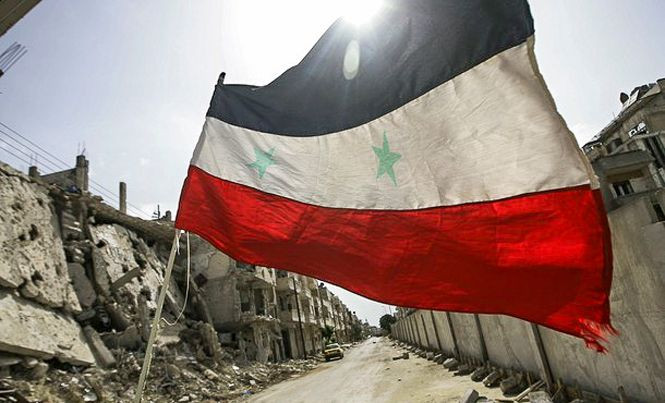Syria Independence Day 2015 Facts: Syrians Celebrate Freedom From Foreign Rule Amid Civil War

Syrians will hoist the national flag across the country Thursday to mark 69 years of independence from France and to honor those who died fighting to liberate Syria. The country will celebrate its freedom from foreign rule, but Syrians are surrounded by a raging civil war. Here are 10 interesting facts to know about Syria, its independence and the ongoing conflict:
1. Syria gained independence from France on April 17, 1946, after more than 20 years of French occupation. Syrians proclaimed independence in 1941, but French troops didn't evacuate until five years later.
2. The national holiday is called Jalaa Day, which translates to Clearance Day or Evacuation Day, referring to the last French soldier to vacate Syrian soil. "No matter who rules it, from before the Greeks and Romans or Ottomans or the French, everyone eventually clears out," a Damascus resident told NPR. "Hence, Clearance Day!"
3. Damascus is Syria's capital and largest city. It was founded in 3,000 B.C. and is one of the oldest cities in the Middle East. The Ancient City of Damascus is listed as a World Heritage Site by UNESCO. A popular nickname for Damascus is the "City of Jasmine." Aleppo is the second-largest city in Syria.
4. After the Ottoman Empire's defeat during World War I, the French were granted mandates over Syria and Lebanon in 1923 by the League of Nations. The Syrians were mostly hostile toward their French rulers and demonstrated in a number of uprisings, including the Great Syrian Revolt in 1925.
5. There are several flags in Syria, which vary slightly from each other. The national flag is the most common and has red, white and black horizontal stripes with two green stars in the middle. Syria's ruling political party, the Ba'ath Party, has its own flag with black, white and green horizontal stripes and a red triangle. This flag is often seen on government buildings along with the national flag. There is also a flag representing Syria's uprising against the French mandate and gaining independence. This was Syria's national flag until 1958. It features green, white and black horizontal stripes with three red stars in the middle.
6. The colors on the flags are symbolic. The green represents the Rashidun and Islam, the black represents the Abbasid Caliphate and the white stripe represent the Umayyads. The red represents the blood of those who died fighting.
7. Bashar al-Assad has served as president of Syria since 2000. Assad took office after the death of his father, Hafez al-Assad, who led the nation for 30 years. Syria is a unitary republic and the government is an authoritarian regime.
8. The Syrian civil war began around 2011 when protesters called for political and civil rights reforms. The nationwide protests were part of a wave of demonstrations and riots across Arab countries known as the Arab Spring, which began in Tunisia in 2010. The Assad regime ordered violent crackdowns and military sieges on the Syrian protesters. The civil uprising eventually morphed into an armed rebellion with various opposition groups that persists today.
9. The Islamic State in Iraq took advantage of the civil uprising and was able to expand its organization into Syria. The terror group, also known as ISIS, is an offshoot of al Qaeda in Iraq and a product of the Iraq War. At least one-third of Syria and Iraq are now under ISIS control. The Sunni militant group opposes the Assad regime and seeks to establish a caliphate across the Middle East. ISIS operates its territory under a strict interpretation of Shariah, or Islamic, law.
10. Syria's religious minority is politically dominant. About 90 percent of Syria's population is Muslim, mostly Sunni. About 12 percent of Syrian Muslims are Alawite. Assad's Alawite-controlled Ba'ath Party has ruled since 1963.
© Copyright IBTimes 2024. All rights reserved.





















